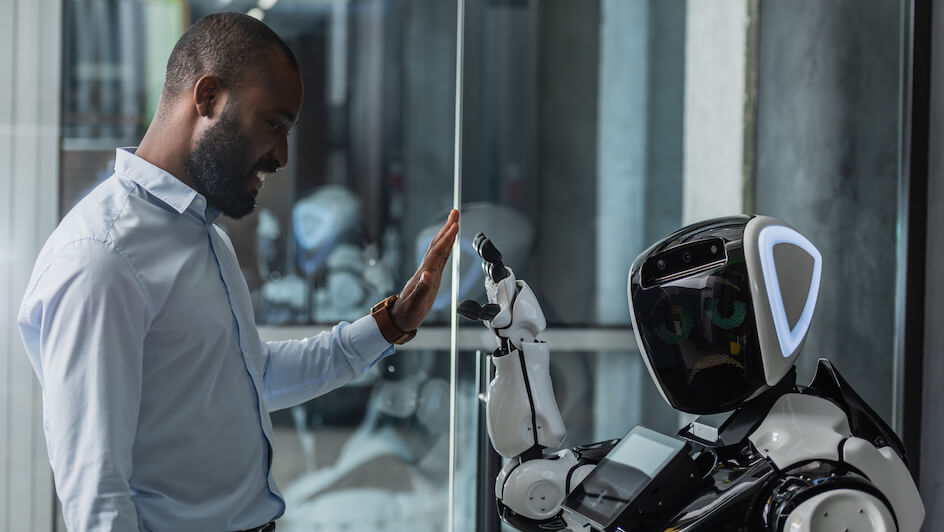New E-Skin Will Allow Robots to Feel

Robots have an advantage over humans in sheer processing power, but we have one over on them: the ability to touch and feel. However, Professor Ravinder Dahiya and his team from the University of Glasgow in Scotland are making strides to change that.
The human body’s largest organ, the skin, is incredibly complex to replicate as it’s laden with nerves and blood vessels: previous attempts to imitate sensation were clunky, as spread-out sensors often overloaded the robot’s ability to process the constant back-and-forth volume of data, resulting in a delayed reaction.
Despite this, Dahiya’s researchers committed to using its simplicity as inspiration for their design. What they came up with was a grid of 168 synaptic transistors – an electronic skin, or “e-skin” – that is spread across a robotic hand, allowing the machine to identify between light and heavy touch.
Professor Dahiya, who also heads the university’s Bendable Electronics and Sensing Technologies group, said: “What we’ve been able to create through this process is an electronic skin capable of distributed learning at the hardware level, which doesn’t need to send messages back and forth to a central processor before taking action.”
Whenever it is touched, the change is interpreted as an electrical resistance, with variation in pressure providing an accurate measurement. Essentially, the e-skin mimics the human brain’s neural pathways to learn from external stimuli, and it greatly reduces the need for computation.
The amazing technology means that more advanced androids could potentially experience the world in a human-like manner, and utilise prosthetic limbs with near-perfect touch-sensitivity.
Soon, we will be giving high-fives to our robo-neighbours!




















